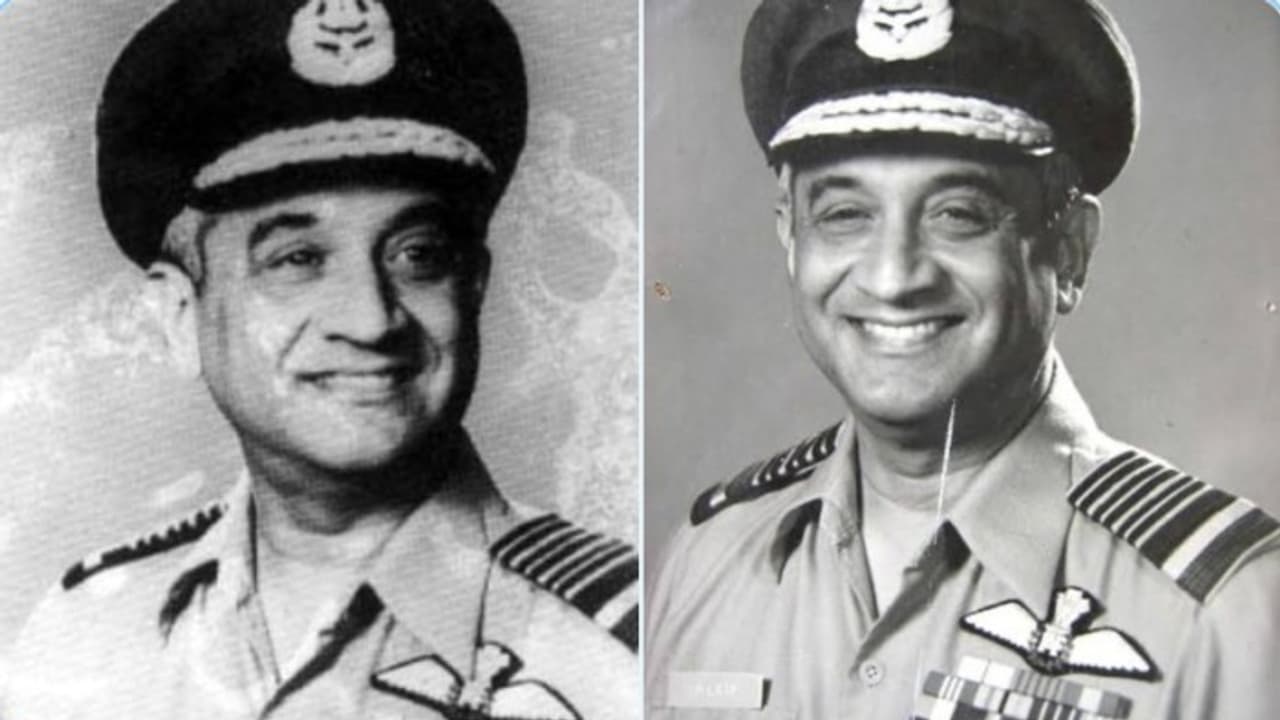India’s first Muslim Air Force Chief Air Chief Marshal Idris Hasan Latif's remarkable journey from World War II biplane pilot to Air Chief and later Governor of Maharashtra is a story of courage, integrity, and patriotism.
As Indian air defence units respond swiftly to ceasefire violations and drone intrusions after Operation Sindoor, the nation's focus returns to the quiet courage and clarity that define the Indian Air Force. Decades ago, one airman embodied this spirit not just in combat, but in character—choosing India over Pakistan at the time of Partition, and going on to lead the IAF with unmatched dignity and discipline. This is the story of Air Chief Marshal Idris Hasan Latif, whose life mirrors the values India asserts today: precision, integrity, and loyalty above all.

Born on June 9, 1923, in Hyderabad to a respected Suleimani Bohra family, Idris Latif studied at Nizam College. At 17 and a half, the minimum age required, he applied to join the Indian Air Force.
Commissioned on January 26, 1942, Latif trained at Begumpet and then at Ambala. His early years in the IAF saw him fly biplanes like the Wapiti, Audax, and Hart, often on anti-submarine missions over the Arabian Sea.
In 1943, Latif was selected to train in the UK on legendary aircraft such as the Spitfire and Hurricane. His team was initially meant to support the D-Day landings in Europe, but the IAF recalled them for the Burma front.
In 1944, Flying Officer Latif returned to India to fly ground attack missions in Burma with No. 3 Squadron. Later, he served under Squadron Leader Asghar Khan (who later became Chief of Pakistan’s Air Force), and the two became friends. Latif was posted to 9 Squadron to fly the Spitfire, a pilot’s dream at the time.
Latif represented India in the 1946 London Victory Parade. Around the time of Partition, Pakistani officers including Asghar Khan and Noor Khan urged Latif to join the Pakistan Air Force. He declined, firmly believing that religion and country were separate.
He stayed in India and rose through the ranks, becoming the IAF's first Muslim Chief of Air Staff in 1978. Before that, he led No. 4 Squadron, flying the Hawker Tempest and conducting India’s first Republic Day flypast in 1950.
In 1951, he married Bilkees, daughter of Nawab Ali Yavar Jung. The couple were together for 66 years, until her passing in 2017.
Latif held many important positions: Advisor to the Indonesian Air Force (1955), Air Defence Commander for the East during the 1965 war, and a key planner in the 1971 war. As PC Lal’s emissary during the 1971 operations, he was awarded the Param Vishisht Seva Medal in 1974.
He served as Commander-in-Chief of both Maintenance and Central Air Commands before becoming Air Chief Marshal in 1978. He retired in 1981.
Post-retirement, Latif became the Governor of Maharashtra from 1982 to 1985. Known for his honesty, he even ruled on corruption allegations against then Chief Minister A.R. Antulay. He later served as India’s Ambassador to France until 1988.
Returning to Hyderabad, Latif remained active in social work. He is remembered as a visionary planner, patriot, and principled leader.
Air Chief Marshal Idris Hasan Latif, one of India’s most respected air warriors, passed away in Hyderabad on April 30 at the age of 94. He had been critically ill with aspiration pneumonia and was undergoing treatment since April 25. He left behind a legacy of service, strategy, and sacrifice that continues to inspire generations of Indians.


